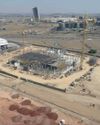Local banking stocks have shown remarkable resilience despite various headwinds. While risks remain, indications are that underlying factors still favour this sector. But does that mean it is time to buy banking shares?

South Africa’s “Big Four” banks – FirstRand, Standard Bank, Barclays Africa and Nedbank – have shown surprising resilience in a tough economic environment, which has been exacerbated by immense political pressure over the closure of the politically connect Gupta family’s bank accounts, the uncertainty over finance minister Pravin Gordhan’s job, and the constant risk of a sovereign credit rating downgrade to junk.
Despite the challenges, most of the banks have recovered lost ground over the past year, and share prices are trading again near (or in the case of Nedbank, in excess) of five-year highs reached early in 2015. Over the past 12 months, Nedbank has returned 47% to shareholders; Standard Bank 25.57%; FirstRand 16.2% and Barclays Africa 13.9%, according to Bloomberg.
Restructuring plans at Old Mutual, the major shareholder in Nedbank, have benefitted the bank’s share price, while Barclays Africa has seen its share performance dampened in part by plans by its majority owner, Barclays plc, to exit its stake in the business to comply with regulatory requirements. Capitec and Investec – two niche competitors in the sector and therefore not directly comparable to the Big Four – saw their share prices return 40.8% and -11.9% respectively over the past year. (See page 18 for more on Capitec.)
Banks’ performance is generally closely tied to the state of the economy. Over the long term, each 1% rise in GDP in SA sees a 5% rise in bank headline earnings, says Andy Bates, Financial Services Africa leader at EY. In 2016, SA’s six biggest banks (the Big Four, as well as Capitec and Investec) managed to grow headline earnings by 6.6%, compared with GDP growth of only 0.3%. However, the combined headline earnings growth was the lowest since 2009, and was significantly lower than the 16.5% achieved in 2015, according to EY.
Challenges on the continent
Diese Geschichte stammt aus der 30 March 2017-Ausgabe von Finweek English.
Starten Sie Ihre 7-tägige kostenlose Testversion von Magzter GOLD, um auf Tausende kuratierte Premium-Storys sowie über 8.000 Zeitschriften und Zeitungen zuzugreifen.
Bereits Abonnent ? Anmelden
Diese Geschichte stammt aus der 30 March 2017-Ausgabe von Finweek English.
Starten Sie Ihre 7-tägige kostenlose Testversion von Magzter GOLD, um auf Tausende kuratierte Premium-Storys sowie über 8.000 Zeitschriften und Zeitungen zuzugreifen.
Bereits Abonnent? Anmelden

THE HEALTH OF SA'S MEDICAL SCHEMES
As the Covid-19 pandemic abates, finweek takes a look at the financial performance of some of the largest players.

The effect of Gilbertson's departure
With Ntsimbintle Holdings now the major shareholder of Jupiter Mines, it could change SA’s manganese industry.

Making money from music
Why investors are increasingly drawn to the music industry.

Conviction is key
Sandy Rheeder plays a critical role in Mukuru’s mission to open up financial services to the emerging consumer market in Africa through tailor-made technology solutions and platforms.

The post-pandemic toolkit
How CFOs can use technology to support growth.

Big city living exodus
Mini cities like Waterfall City and Steyn City are redefining city-style apartment living.

Big compact, big value
Handsome, with a hefty level of standard specification, the roomy Haval Jolion compact crossover is a great value proposition.

On barriers to entry
There are various ways in which a company or sector can achieve competitive dominance. They usually make for good investments.

Fear and greed in one index
To buck the trend, when markets are hot or cold, is a tough thing to do. However, it can deliver solid returns.

Africa's largest data centre facility coming soon
Vantage Data Centers plans to invest over R15bn for its first African data centre facility in Attacq’s Waterfall City.